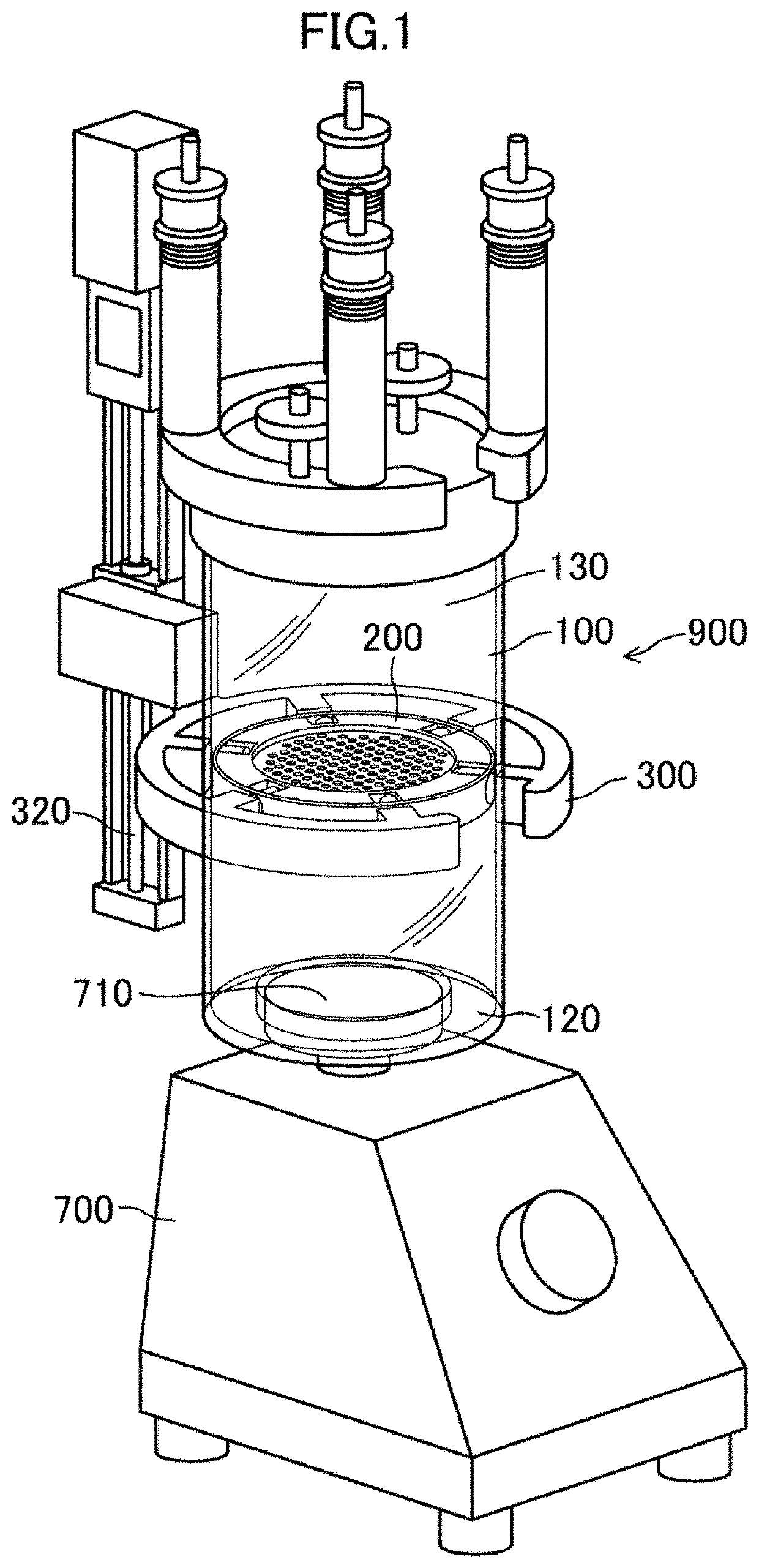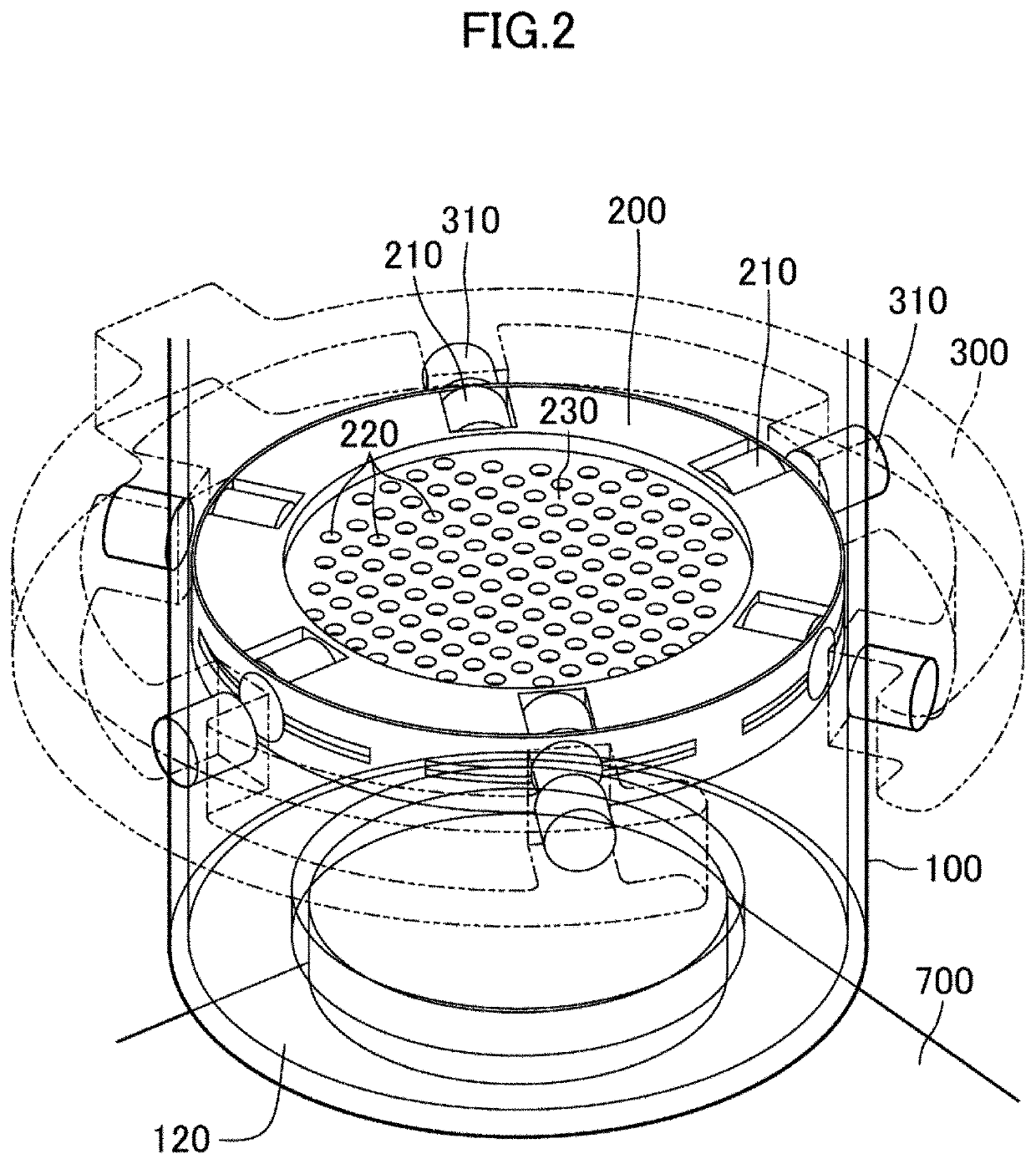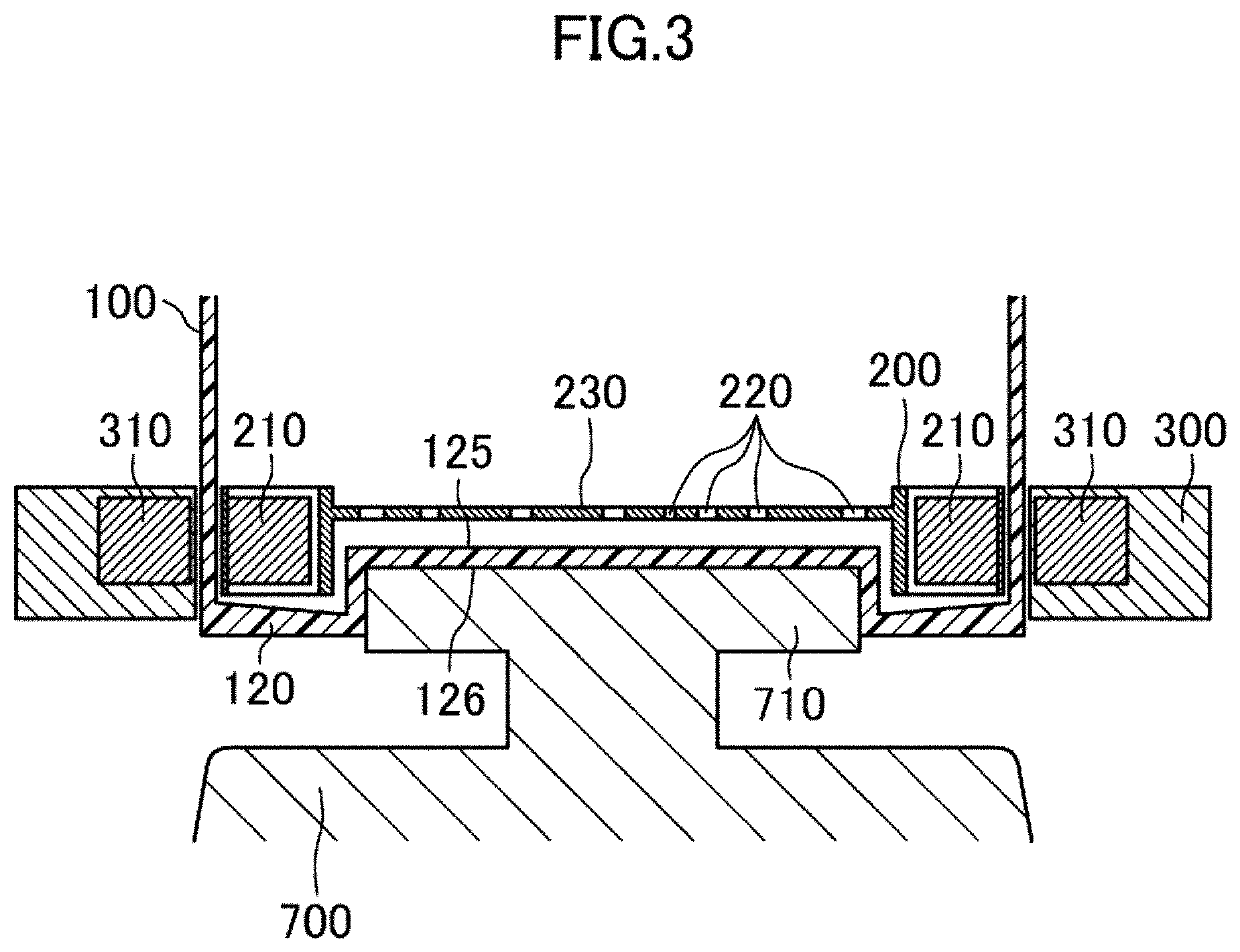Cell culture device
a cell culture and device technology, applied in the field of cell culture devices, can solve the problems of inefficient methods and difficulty in cell oxygenation
- Summary
- Abstract
- Description
- Claims
- Application Information
AI Technical Summary
Benefits of technology
Problems solved by technology
Method used
Image
Examples
example 1
[0045]The dish-shaped body arranged in the hollow space of the cell culture vessel was positioned to be in the vicinity of the lower portion of the cell culture vessel. A scaffold, a medium, and cells to be cultured were placed into the hollow space of the cell culture vessel from the opening at the upper end of the cell culture vessel. The cells used were 5.0×107 adipose-derived mesenchymal stem cells (ADSCs). As the scaffold (3D cell culture), 5,000 sheets of BioNOC II Matrix manufactured by Clean Energy Service Co., Ltd. (“CESCO”) were used. The stroke length of the vertical movement of the annular body was set to 60 mm, and the speed of the upward or downward movement of the annular body was set to 1.0 mm / sec. The cycle of the vertical movement of the annular body was set to 1.0 times / hour. The cells were cultured for eight days.
[0046]FIG. 4 is a diagram that illustrates the amount of sugar consumption (mg / dL / day) of the cells for each day of culture. The amount of sugar consump...
example 2
[0049]The cells used in example 1 were ADSCs. In example 2, an attempt to culture bone marrow-derived mesenchymal stem cells (BMSCs) was carried out.
[0050]The dish-shaped body arranged in the hollow space of the cell culture vessel was positioned to be in the vicinity of the lower portion of the cell culture vessel. A scaffold, a medium, and cells to be cultured were placed into the hollow space of the cell culture vessel from the opening at the upper end of the cell culture vessel. The cells used were 3.0×107 BMSCs. As the scaffold (3D cell culture), 2,000 sheets of BioNOC II Matrix manufactured by Clean Energy Service Co., Ltd. (“CESCO”) were used. The stroke length of the vertical movement of the annular body was set to 40 mm, and the speed of the upward or downward movement of the annular body was set to 1.0 mm / sec. The cycle of the vertical movement of the annular body was set to 1.0 times / hour. The cells were cultured for six days.
[0051]FIG. 6 is a diagram that illustrates the...
example 3
[0054]Synovial-derived mesenchymal stem cells are useful for regenerating cartilage and the meniscus because they have a very high cartilage differentiation capacity and proliferation ability. In example 3, an attempt to culture synovial-derived mesenchymal stem cells was carried out.
[0055]The dish-shaped body arranged in the hollow space of the cell culture vessel was positioned to be in the vicinity of the lower portion of the cell culture vessel. A scaffold, a medium, and cells to be cultured were placed into the hollow space of the cell culture vessel from the opening at the upper end of the cell culture vessel. The cells used were 1.5×107 synovial-derived mesenchymal stem cells. As the scaffold (3D cell culture), 3,000 sheets of BioNOC II Matrix manufactured by Clean Energy Service Co., Ltd. (“CESCO”) were used. The stroke length of the vertical movement of the annular body was set to 45 mm, and the speed of the upward or downward movement of the annular body was set to 1.0 mm / ...
PUM
 Login to View More
Login to View More Abstract
Description
Claims
Application Information
 Login to View More
Login to View More - R&D
- Intellectual Property
- Life Sciences
- Materials
- Tech Scout
- Unparalleled Data Quality
- Higher Quality Content
- 60% Fewer Hallucinations
Browse by: Latest US Patents, China's latest patents, Technical Efficacy Thesaurus, Application Domain, Technology Topic, Popular Technical Reports.
© 2025 PatSnap. All rights reserved.Legal|Privacy policy|Modern Slavery Act Transparency Statement|Sitemap|About US| Contact US: help@patsnap.com



